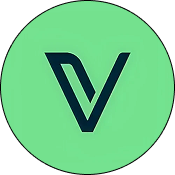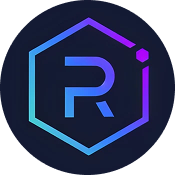As blockchain technology continues to mature, understanding the nuances between different networks becomes crucial for investors and developers alike. VeChain and Kusama stand out as two distinctive platforms: one optimized for enterprise solutions and mass adoption, the other serving as an experimental playground for innovation. This comparison explores their technical architectures, use cases, and suitability for various user needs, shedding light on which blockchain aligns best with your goals.
Short on time? Jump to VeChain vs Kusama Comparison
Understanding VeChain and Kusama ?
VeChainThor operates as a layer 1 blockchain designed specifically for supply chain management, product authentication, and enterprise solutions. Launched in June 2018, it emphasizes speed, efficiency, and sustainability, utilizing a Proof of Authority (PoA) consensus mechanism with 101 Authority Masternodes that are vetted through strict KYC procedures. VeChain’s focus is on real-world adoption, integrating seamlessly with existing business processes to enhance transparency and trust.
Kusama, on the other hand, is a scalable, multi-chain network built with Substrate, sharing nearly the same codebase as Polkadot. Launched as a 'canary network,' it serves as an experimental environment for early-stage deployments and innovative blockchain projects. Kusama’s governance is designed for rapid iteration, allowing developers to test new features and parachains before they are integrated into Polkadot, making it a fertile ground for experimentation.
While VeChain prioritizes stability and enterprise-grade performance, Kusama embraces flexibility and speed, often sacrificing some security for innovation. Both networks utilize advanced blockchain frameworks but serve distinctly different purposes—VeChain as a reliable, business-ready platform, and Kusama as a dynamic testing ground for the future of blockchain technology.
Their differing architectures reflect their core missions: VeChain’s PoA ensures trusted, efficient transactions suitable for supply chains, whereas Kusama’s shared security model and flexible governance cater to developers eager to experiment and deploy new ideas rapidly. Understanding these foundational differences is key to choosing the right platform for your specific needs.
Key Differences Between VeChain and Kusama
Consensus Mechanism
- VeChain: VeChain uses a Proof of Authority (PoA) consensus, relying on a limited set of vetted authority nodes to produce blocks. This model enhances speed, security, and energy efficiency, making it highly suitable for enterprise applications where trust and compliance are paramount.
- Kusama: Kusama employs a nominated Proof of Stake (NPoS) system, facilitating rapid governance and upgrades. Its flexible consensus allows for quick experimentation, but it trades off some stability, reflecting its role as an early adopter platform for blockchain innovations.
Target Audience and Use Cases
- VeChain: VeChain is ideal for enterprises seeking to improve supply chain transparency, product authenticity, and regulatory compliance. Its robust infrastructure supports real-world use cases like luxury goods verification and food safety tracking, making it a dependable choice for business adoption.
- Kusama: Kusama caters to developers, startups, and blockchain innovators aiming to test new protocols, governance models, and parachains. Its environment encourages rapid deployment and iteration, serving as a proving ground before projects graduate to Polkadot or other mainnet deployments.
Network Stability and Security
- VeChain: VeChain's PoA consensus, with vetted, known validators, emphasizes security and reliability, crucial for enterprise applications requiring consistent uptime and trustworthiness. Its proven track record since 2018 underscores its stability.
- Kusama: Kusama, as an experimental platform, accepts a higher risk profile. Its frequent updates and governance adjustments can lead to instability, but this volatility is intentional, fostering innovation and rapid evolution among developers.
Energy Consumption
- VeChain: VeChain is designed to be energy-efficient, with consumption at just 0.04% of other blockchains, aligning with sustainability goals and enterprise standards for eco-friendly operations.
- Kusama: Kusama’s energy profile depends on its consensus mechanism, which is less optimized for low consumption. Its focus is on functionality and experimentation, not energy efficiency, which is typical for test networks.
Upgrade and Governance Speed
- VeChain: VeChain undergoes regular, carefully planned protocol upgrades, emphasizing stability and security for business users. Governance is centralized around its foundation with strict compliance processes.
- Kusama: Kusama features a rapid governance cycle, enabling quick proposals and updates. Its flexible governance structure allows for faster experimentation but may introduce higher risks of bugs or instability.
VeChain vs Kusama Comparison
| Feature | ✅ VeChain | ✅ Kusama |
|---|---|---|
| Consensus Mechanism | Proof of Authority (PoA) with 101 vetted nodes | Nominated Proof of Stake (NPoS) with flexible validator set |
| Primary Use Cases | Supply chain, product authenticity, enterprise solutions | Early-stage project testing, parachains, governance experiments |
| Network Stability | High stability, proven since 2018 | Less stable, designed for rapid iteration |
| Energy Efficiency | Extremely low, 0.04% of typical blockchains | Variable; higher energy use depending on consensus |
| Upgrade Speed | Structured, regular upgrades for enterprise stability | Fast, frequent upgrades for experimentation |
Ideal For
Choose VeChain: Businesses and enterprises seeking a secure, scalable, and sustainable blockchain solution for real-world applications.
Choose Kusama: Developers, startups, and blockchain enthusiasts aiming to test new ideas in a flexible, fast-paced environment before deploying on mainnets.
Conclusion: VeChain vs Kusama
VeChain and Kusama represent two ends of the blockchain spectrum: one prioritizing stability, security, and enterprise readiness, the other fostering innovation through rapid experimentation. Their architectures and governance models reflect these priorities, making each suitable for different types of users and applications.
Choosing between them depends on your specific needs—whether it’s deploying a reliable supply chain platform or experimenting with cutting-edge blockchain features. Both ecosystems continue to evolve, offering valuable opportunities for growth and innovation tailored to distinct user bases.






